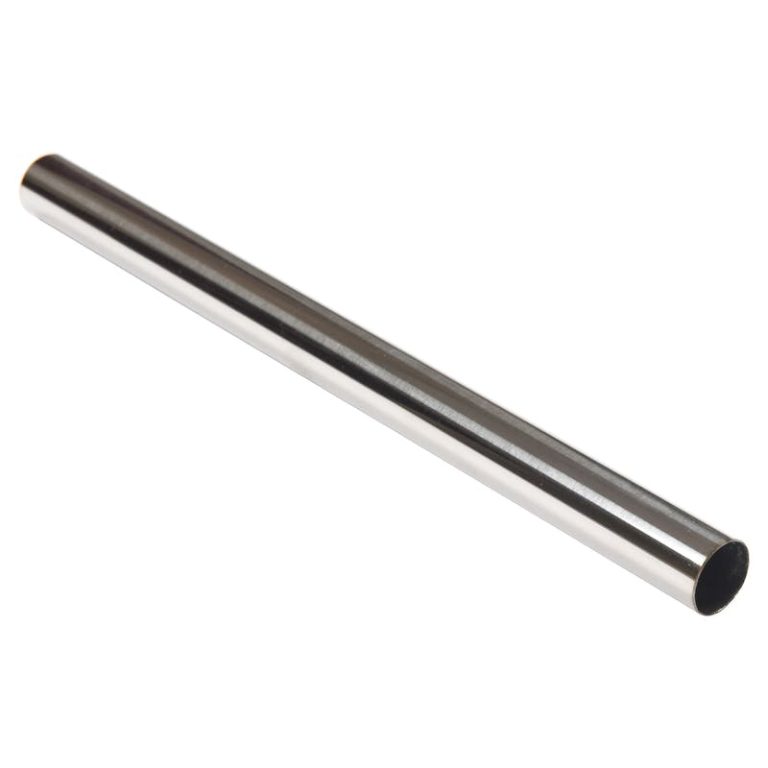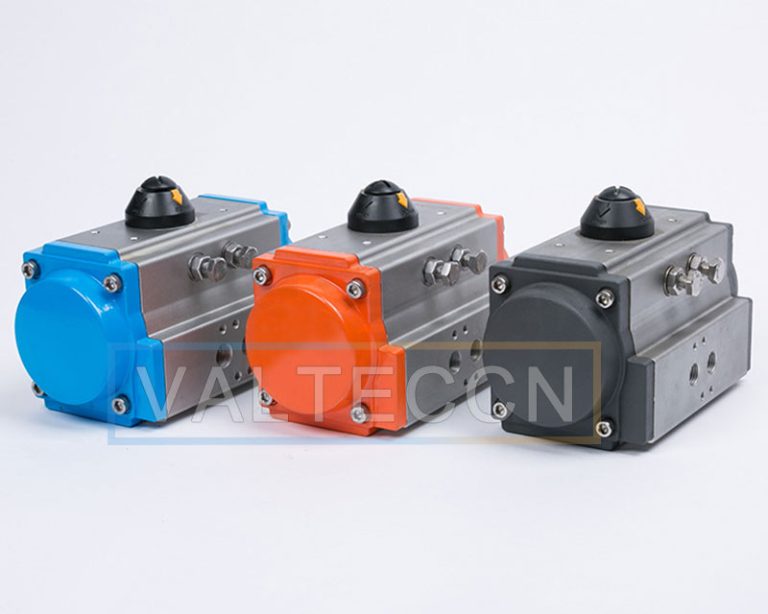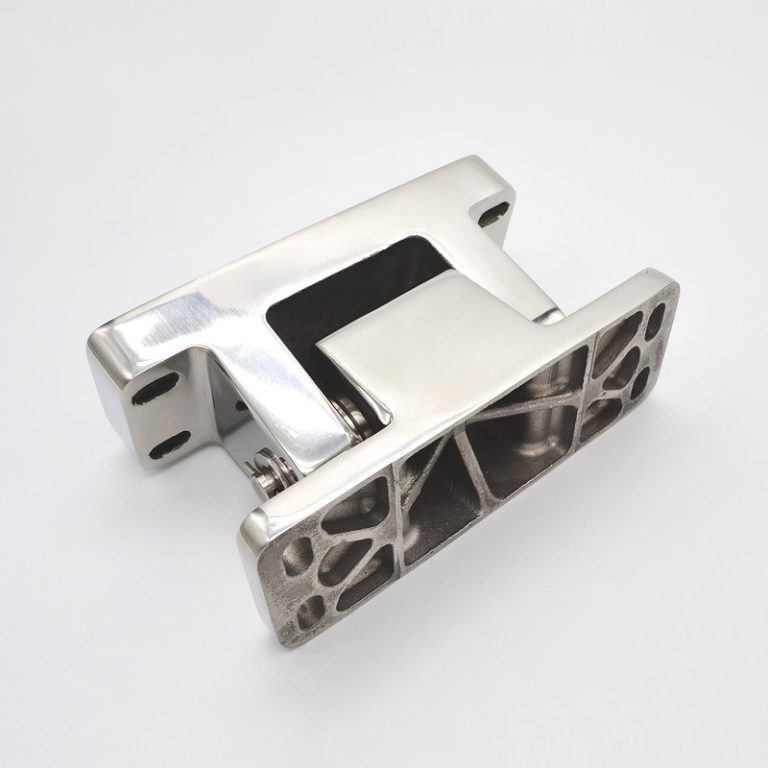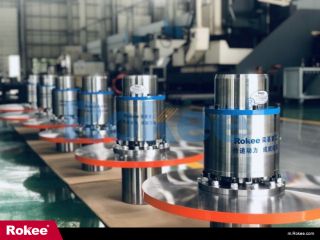Vortex Tube Cold Fractions Explained
Simply put, a Vortex Tube’s Cold Fraction is the percentage of its supply air that gets directed to the cold end. The rest of the supply air goes out the hot end. Here’s how it works:

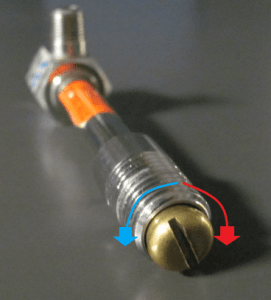
No matter what the Cold Fraction is set to, the air coming out the cold end will be lower in temperature, and the air exiting the hot end will be higher in temperature, than the compressed air supply. The Cold Fraction is set by the position of the Control Valve. Opening the Control Valve (turning counterclockwise, see blue arrow on photo to right) lowers the Cold Fraction, resulting in lower flow – and a large temperature drop – in the cold air discharge. Closing the Control Valve (turning clockwise, see red arrow) increases the cold air flow, but results in a smaller temperature drop. This adjustability is key to the Vortex Tube’s versatility. Some applications call for higher flows; others call for very low temperatures…more on that in a minute, though.
The Cold Fraction can be set as low as 20% – meaning a small amount (20% to be exact) of the supply air is directed to the cold end, with a large temperature drop. Conversely, you can set it as high as 80% – meaning most of the supply air goes to the cold end, but the temperature drop isn’t as high. Our 3400 Series Vortex Tubes are for 20-50% Cold Fractions, and the 3200 Series are for 50-80% Cold Fractions. Both extremes, and all points in between, are used, depending on the nature of the applications. Here are some examples:
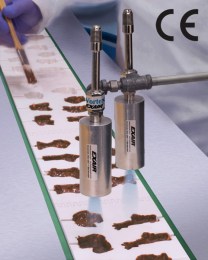
A candy maker needed to cool chocolate that had been poured into small molds to make bite-sized, fun-shaped, confections. Keeping the air flow low was critical…they wanted a nice, smooth surface, not rippled by a blast of air. A pair of Model 3408 Small Vortex Tubes set to a 40% Cold Fraction produce a 3.2 SCFM cold flow (feels a lot like when you blow on a spoonful of hot soup to cool it down) that’s 110°F colder than the compressed air supply…or about -30°F. It doesn’t disturb the surface, but cools & sets it in a hurry. They could turn the Cold Fraction down all the way to 20%, for a cold flow of only 1.6 SCFM (just a whisper, really,) but with a 123°F temperature drop.
Welding and brazing are examples of applications where higher flows are advantageous. The lower temperature drop doesn’t make all that much difference…turns out, when you’re blowing air onto metal that’s been recently melted, it doesn’t seem to matter much if the air is 20°F or -20°F, as long as there’s a LOT of it. Our Medium Vortex Tubes are especially popular for this. An ultrasonic weld that seals the end of a toothpaste tube, for example, is done with a Model 3215 set to an 80% Cold Fraction (12 SCFM of cold flow with a 54°F drop,) while brazing copper pipe fittings needs the higher flow of a Model 3230: the same 80% cold fraction makes 24 SCFM cold flow, with the same 54°F temperature drop.
Regardless of which model you choose, the temperature drop of the cold air flow is determined by only two factors: Cold Fraction setting, and compressed air supply pressure. If you were wondering where I got all the figures above, they’re all from the Specification & Performance charts published in our catalog:
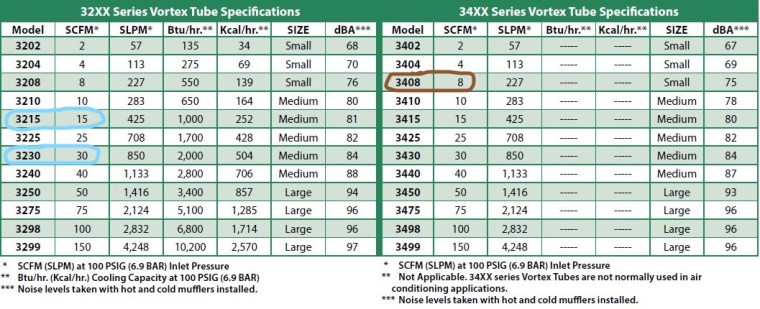
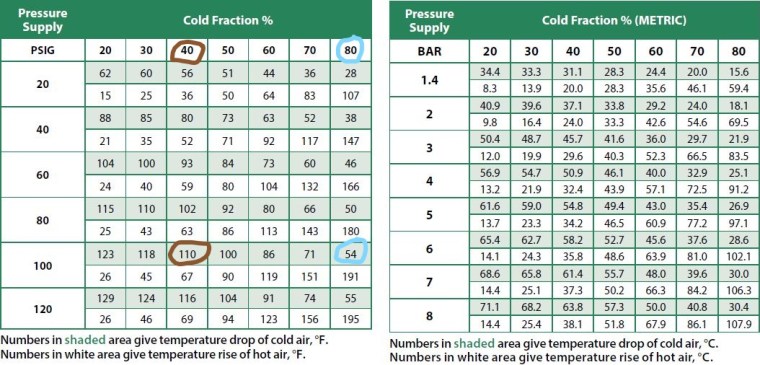
EXAIR Vortex Tubes & Spot Cooling Products are a quick & easy way to supply a reliable, controllable flow of cold air, on demand. If you’d like to find out more, give me a call.
Russ Bowman
Application Engineer
EXAIR Corporation
Visit us on the Web
Follow me on Twitter
Like us on Facebook
